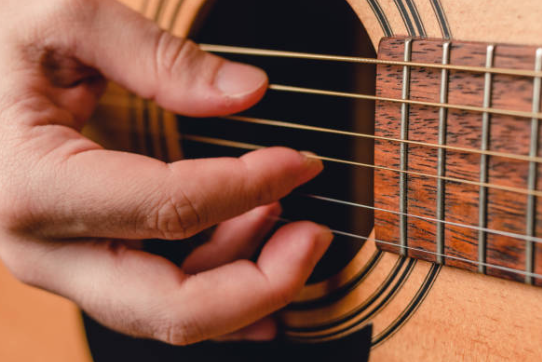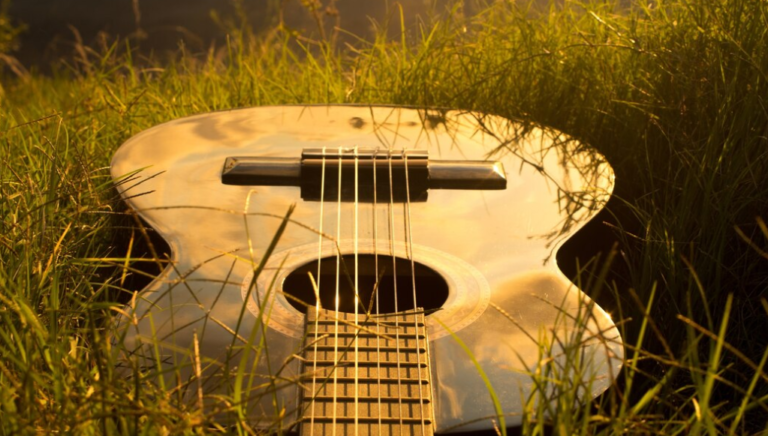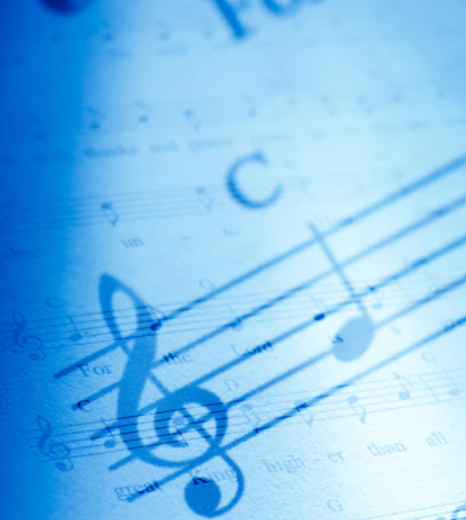All You Need to Know About The D Barre Chord
Welcome aboard, champ. You’ve stumbled upon the new and improved way to learn online here at Real Brave. First, the realm of guitar chords – a place teeming with vibrant hues of versatility and the sonorous depth of harmonic richness. Today, we will shine the spotlight on one illustrious character: the D barre chord. This major champ is your golden ticket to a whole new playground of guitar wizardry. So buckle up, because we’re about to dive headfirst into the mesmerizing world of the D bar chord.
History and Background
The History and Theory Behind the D Barre Chord
The D barre chord, a fundamental element in the guitarist’s repertoire, has a rich history and significant theoretical underpinnings, shaping its use across various musical genres.
Historical Context
The concept of barre chords, including the D barre chord, originated in the classical guitar tradition. The ability to play chords along the fretboard, rather than being confined to open chords, was crucial in classical compositions, offering a wider range of harmonic possibilities. The technique was later adopted and popularized in other genres.
In jazz, the use of barre chords, including the D barre chord, became essential due to the genre’s complex chord progressions and frequent key changes. Jazz guitarists like Django Reinhardt and Wes Montgomery often used the D barre chord to create rich, sophisticated harmonies and to facilitate smooth transitions between different chord voicings.
In rock music, the D barre chord found a different expression. Guitarists like Jimi Hendrix and Eric Clapton used it to create fuller, more resonant sounds, often in combination with distortion and other electric guitar effects. The D barre chord became a staple in the rock guitarist’s toolkit, providing a powerful sound that could easily fill larger venues.
Musical Theory
From a theoretical perspective, the D barre chord is essentially a way of playing the D major chord using a barre technique. The D major chord is composed of the notes D, F♯, and A. When played as a barre chord, it can be positioned in various places on the fretboard, each offering a different voicing and tonal quality.
Two common positions for the D barre chord are:
- Based on the A Major Shape: This shape is played by barring the fifth fret and positioning the other fingers as if playing an open A major chord. This shape emphasizes the root note, D, on the fifth string.
- Based on the E Major Shape: Here, the chord is played by barring the tenth fret and using the open E major shape. This variation often produces a brighter sound with the root note, D, on the sixth string.
Influence Across Genres
- Jazz: The flexibility of the D barre chord allowed jazz guitarists to add intricate color to their music. The ability to play chord inversions and alterations, like Dmaj7 or D6, using the barre chord shape, enabled a richer harmonic palette.
- Rock: In rock, the D barre chord’s resonance and volume were crucial, especially in the era of power trios and rock bands where the guitar often carried the harmonic content of songs. Its use in famous riffs and progressions shaped the sound of classic rock.
- Classical: In classical guitar music, the D barre chord allowed for more intricate and harmonically dense compositions, enabling guitarists to play more complex pieces that were previously only possible on keyboards.
The D barre chord is more than just a chord shape; it’s a reflection of the guitar’s evolution across musical genres. Its adaptability and rich tonal qualities have made it a favorite among guitarists from diverse musical backgrounds, demonstrating the guitar’s versatility as an instrument
The Basics of the D Barre Chord
The D barre chord is a major chord, meaning it has a bright and uplifting sound. To play it, you use your index finger to ‘bar’ across all the strings at a particular fret, forming the base of the chord. For a D major barre chord, this is typically done at the fifth fret, using the A major chord shape. 55420
Step-by-Step Guide to Play the D Major Bar Chord
Playing a D major bar chord on the guitar involves using your index finger to press down several strings across a single fret. Here’s a detailed guide on how to position your fingers:
Step 1: Understanding the Chord Structure
The D major chord consists of three notes: D (the root), F♯ (the major third), and A (the perfect fifth). In a barre chord formation, these notes are repeated across different strings to create a full, resonant sound.
Step 2: Position Your Index Finger
For the D major bar chord, position your index finger across all six strings at the 10th fret. This action is what we call “barre” or “bar” the strings. Ensure your index finger is straight and presses down firmly to avoid any buzzing sounds.
Step 3: Place Your Ring Finger
Place your ring finger on the 12th fret of the A (5th) string. This finger will be playing the A note.
Step 4: Place Your Pinky Finger
Put your pinky finger right beside your ring finger on the 12th fret of the D (4th) string, playing another D note, an octave higher than the root.
Step 5: Place Your Middle Finger
Your middle finger should go on the 11th fret of the G (3rd) string, playing the F♯ note.
Step 6: Strum the Chord
Strum all six strings. Make sure each string rings clearly. If you hear any muted or buzzing sounds, adjust your fingers until each note sounds clean and clear.
Step 7: Practice Shifting
Practice shifting into and out of the D major bar chord from other chords. This will help you get comfortable with its positioning in the context of a song or chord progression.
Step 8: Explore Different Voicings
Once comfortable with this shape, you can also play the D major chord using the barre chord shape based on the open A major chord, barring the fifth fret.
Step 9: Experiment with Strumming Patterns
Experiment with different strumming patterns and rhythms to understand how the D major bar chord can be used in various musical contexts.
Tips for Success:
- Ensure your fingers are arched and not accidentally muting adjacent strings.
- Start slowly, focusing on clean sound production before increasing speed.
- Regular practice is key to developing the strength and muscle memory needed for barre chords.
Common D Barre Chord Shapes
There are a couple of common shapes for the D barre chord:
- Based on the A Major Shape: Here, you barre the fifth fret and use your other fingers to mimic the shape of an open A major chord.
- Based on the E Major Shape: This involves barring the tenth fret and forming an E major chord shape with your other fingers.
Transitioning to the D Barre Chord
Transitioning to playing barre chords, particularly the D bar chord, can be challenging. It requires building finger strength and practicing the art of barring strings cleanly across the fretboard. Start with simpler barre chords and gradually work your way to more complex ones like the D major.
Practice Techniques for Barre Chords
Mastering barre chords, particularly the D barre chord, requires consistent and focused practice. Here are some effective techniques and exercises to enhance your skill.
Switching Between Open and Barre Chords
- Start with a simple chord progression that includes both open chords and a D barre chord. For instance, practice transitioning from a G major (open) to a D major (barre) and then to an A major (open).
- Focus on the speed and fluidity of your transitions. Start slowly and gradually increase your pace as you become more comfortable.
Practicing Chord Progressions
- Incorporate the D barre chord into various chord progressions. A common progression might be D – G – Bm – A, where D and Bm are played as barre chords.
- Experiment with progressions in different keys, using the D barre chord as a pivot point.
Building Finger Strength and Flexibility
- Dedicate time to specifically strengthen your barring finger. One exercise is to simply barre all strings at a specific fret and strum, checking for clarity in each string.
- Practice moving your barring finger up and down the fretboard to build flexibility.
Strumming and Rhythm Practice
- Practice strumming patterns while holding the D barre chord. This helps in building endurance and also enhances your rhythmic skills.
- Experiment with different rhythms, such as 4/4, 3/4, and 6/8 time signatures, while maintaining the D barre chord shape.
Isolating Problem Areas
- If certain strings buzz or don’t ring clearly, isolate the problem. Work on applying pressure more evenly across the fretboard or adjusting your finger placement.
Using a Metronome
- Practice with a metronome to develop a sense of timing and rhythm. Start with a slow tempo and increase it as you gain confidence and accuracy with the chord changes.
Incorporating Fingerpicking
- Once comfortable with strumming the D barre chord, try fingerpicking patterns. This will further enhance your dexterity and control over the chord.
Exploring Variations
- As you become more comfortable, explore different voicings and variations of the D barre chord to expand your musical vocabulary.
Regular Short Practice Sessions
- Frequent, shorter practice sessions are more effective than infrequent, long ones. They prevent strain and promote more consistent progress.
Recording and Analyzing Your Practice
- Record your practice sessions. Listening back can help identify areas for improvement that you might not notice while playing.
Remember, patience and persistence are key. Barre chords can be challenging initially, but with regular practice, they become an integral and rewarding part of your guitar playing skills.
Advanced Techniques
As you get comfortable with the D barre chord, you can explore variations like adding sevenths or suspensions to add color and texture to your playing.
Incorporating the D Barre Chord into Songs
The D barre chord is used in countless songs across various genres. Practicing these songs can help you understand the chord’s role and how it enhances musical pieces.
The D barre chord is a fundamental skill in guitar playing, opening doors to a wide array of musical styles and expressions. Though it may seem daunting at first, with patience, dedication, and a sprinkle of audacity, this chord becomes an invaluable part of your guitar toolkit. It’s like learning a new language – the initial steps might appear steep, but as you climb, the panoramic view is worth every single second of the struggle. So imbibe the essence of the D barre chord, let it seep into your musical veins, and watch as it transforms your guitar-playing landscape.
Additional Resources
Remember, mastery isn’t a solitary journey – there’s a plethora of resources available to assist you in conquering the D barre chord. Online tutorials, chord charts, instructional books – these are your compass, your map, your guide in this riveting adventure. They offer in-depth guidance and an abundance of practice material to help hone your skills. So harness these resources, practice until the strings hum your victory, and let the D barre chord become an extension of your musical self.





